This EASY Australian Pavlova recipe is all about that crunchy, chewy meringue shell and soft, pillowy marshmallow centre. Have the meringue base in the oven in just 15 minutes! Includes recipe video, step-by-step instructions and creative topping ideas.
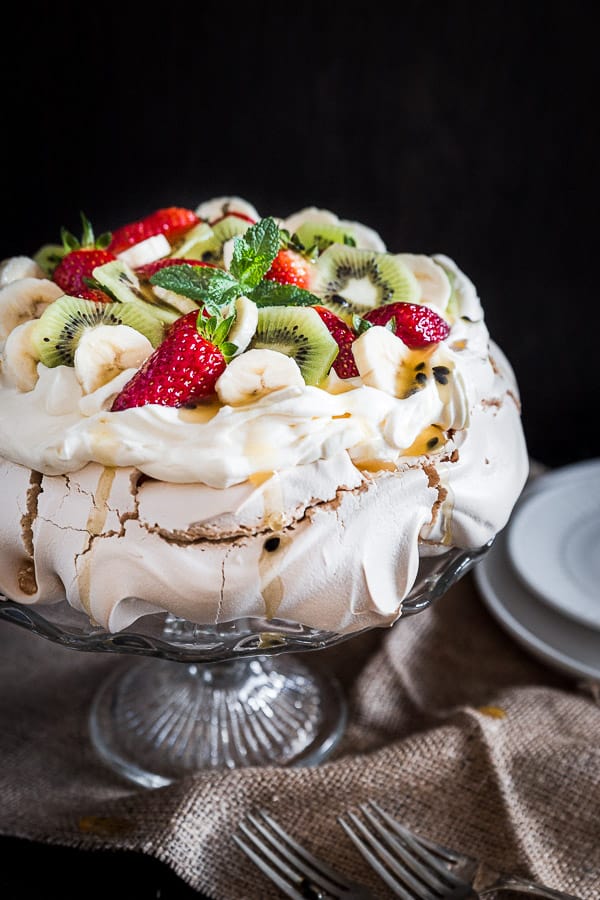
Why We Love This
Pavlova reminds us of backyard BBQ’s spent with friends under the summer sun. Just like custard trifle and ice cream pudding, it’s a beloved dish at Christmas time in Australia. Especially good after a heavy roast lunch, it’s the perfect light and fluffy dessert that leaves you feeling light and not sick from an overabundance of sugar.
To this day we’re not sure whether the crunchy outer shell or melty marshmallow centre is our favourite part of this dessert. Maybe it’s both!
What about you? What’s your favourite way to eat pavlova? Looking for more pavlova ideas? Try our pavlova roll (meringue roulade) or eton mess!
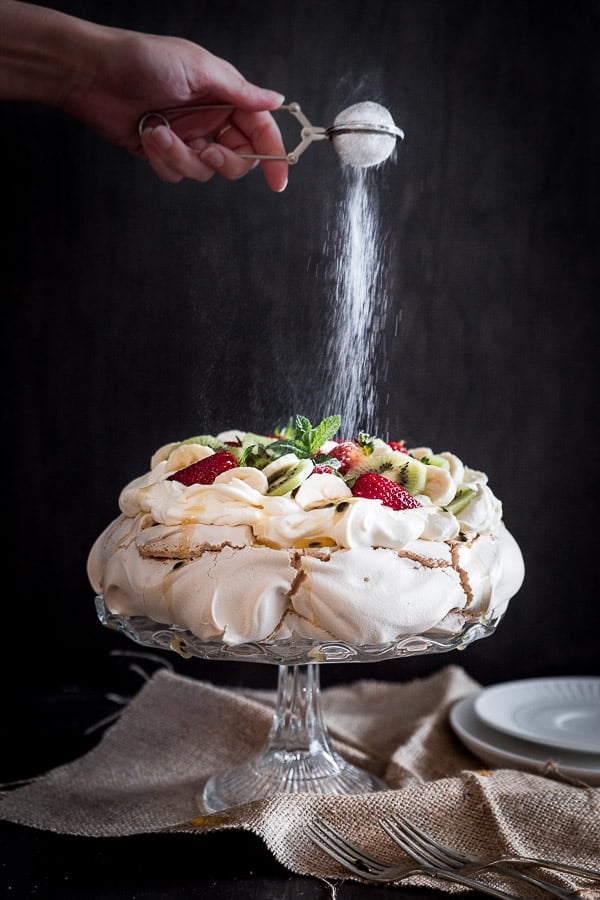
What is Pavlova?
Pavlova is a classic dessert recipe that is always served for family events or celebrations – big or small. Whether it’s a humble BBQ dinner, a birthday, Christmas, New Years Eve celebrations or even Australia Day. It’s super popular because it’s so easy to make and always looks impressive!
Pavlova is traditionally made from a base of meringue topped with whipped cream and fruit – although these days there’s lots of creative ways you can make it. Another super popular variation is to make it into a meringue roulade aka pavlova roll. See below for more ideas!
Where Does It Come From?
There’s been huge debate over whether this simple sweet dessert of meringue, cream and fruit has Australian, New Zealand or even American origins.
But to anyone who’s pondering this, we’ve got only one thing to say: Just eat it already! When pavlova tastes this good, we’ll share ownership with anybody.
No matter which origin story you subscribe to, today we’re sharing the Australian “version” handed down from our Mums and Grandmas. This is the pavlova style we grew up with, that just gets better and easier with every repetition!
Where We Learned This Recipe
Pavlova sparks so many happy feels and memories of family celebrations for us. Like that time Laura’s Aunty made the biggest pavlova she’d ever seen for Grandma’s birthday. Or those days Sarah spent inside with Mum, beating the eggs and sugar and licking the beaters afterwards.
Growing up with pavlova on both sides of the families meant we just had to share both the recipe and our love for this special dessert.
Pavlova vs Eton Mess
Eton Mess is basically a super quick 5 minute version of pavlova, made into individual portions rather than a full size dessert. It’s like a cheat-mode version, using pre-made mini meringue nests topped with sweet cream and fruit.
If you’re short on time and need a super quick dessert – or even just a mini pavlova to celebrate with friends – then our Eton Mess has you covered. You can also use your homemade mixture to make mini meringues or nests – they’ll taste much better than store-bought meringue, so it’s worth the extra effort.
What You’ll Need
The meringue shell is a super simple blend of eggs, sugar and vanilla essence, with a little vinegar and corn starch added to make it both fluffy AND crispy. A few quick notes on these ingredients:
- Eggs – For best results, make sure to use room-temperature eggs. We use chicken eggs for this recipe, but duck eggs are absolutely fabulous if you can get your hands on them!
- Sugar – We recommend caster sugar, aka super fine sugar. It dissolves into the egg whites more quickly and will give you that smooth texture you’re looking for.
- Vinegar – The acid in vinegar helps the egg whites become fluffy and hold onto all that air that’s beaten in. Regular white vinegar (or white wine vinegar) is the best choice, but you can substitute with apple cider vinegar, cream of tartar, or even lemon juice in a pinch. We don’t recommend strong dark vinegars like balsamic or malt as they’re more likely to add a strong flavour to the meringue.
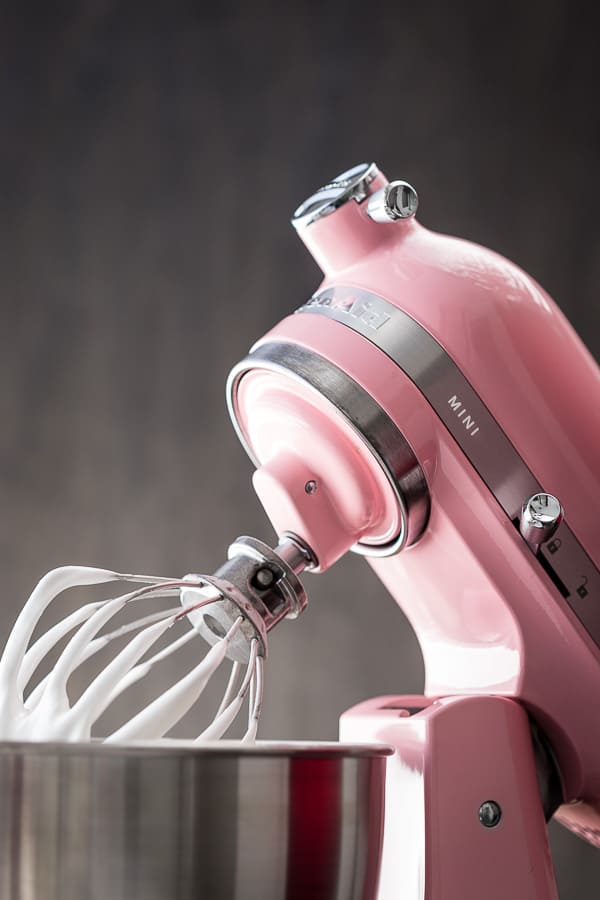
How to make Pavlova:
This is the EASY method to make pavlova which we’ve called 2-4-6-8, due to the speed settings used to get that glossy meringue mixture we’re looking for! You can make it in a Kitchenaid Mixer, a regular stand mixer, or a mixing bowl with a hand mixer and gradually increase the speed settings to get it just right.

1. 
2. 
3.
- Pop your egg whites into the mixing bowl and attach the whisk to the stand mixer (or use a hand mixer). Start by whipping them on Speed 2 then move through to Speed 4 after a couple of minutes.
- When the egg whites turn into bubbly soft peaks, up the speed to 6 and add the caster sugar and cornflour, then increase to Speed 8 for 10 – 12 minutes until you’ve got yourself a luxuriously smooth, glossy meringue mixture.
- Now bring the speed down to 4 and pour in the vinegar and vanilla essence. You might need to scrape down the meringue from the sides of the bowl every now and again with a spatula to make sure it mixes through. Let it mix for 1 minute then switch off your mixer.

4. 
5. 
6.
- Scoop out the glossy meringue mixture onto a lined baking tray and form a flat circle shape. Smooth it out or get creative with decorative patterns, twists or twirls. Pop in the oven and bake for an hour to an hour and a half until the meringue sets into a crunchy, crispy outside with a soft golden glow. When the outside is firm and dry, and cracks start to appear on the top, you’re ready to go. Switch off the oven and allow the pavlova to cool in the oven with the door slightly open.
- While the pavlova is cooling, pour your cream into your cleaned mixing bowl and pop in the freezer for 10-15 minutes. When your pavlova is cool, place the bowl back on the stand mixer (or grab your hand mixer) and whip the cream on Speed 6 – 8. Add in the sugar and vanilla essence and continue to whip until the cream thickens and holds a nice shape.
- Top your cooled pavlova with whipped cream and sliced fruit, and dust with icing sugar.
Pavlova Topping Ideas
While the magic is happening as you bake your pavlova in the oven, you’ll have plenty of time to plan your toppings. Here are a few of our favourite topping combinations to get you started!
- Classic: strawberries + kiwifruit + passionfruit + cream + icing sugar
- Mandy’s Favourite (thanks to Sarah’s Wandermum): banana + kiwifruit + passionfruit + cream
- Berry Elegant: strawberries + raspberries + blackberries + blueberries + cream
- Choc Top: nutella + strawberries + cream
- Fruity Goodness: blueberries + mango + passionfruit
Also, whatever you do, don’t skimp out on that whipped cream. Slather a nice thick layer over the top of your pavlova, and make yourself a nice base for your fruit and extra decadence for your plate.
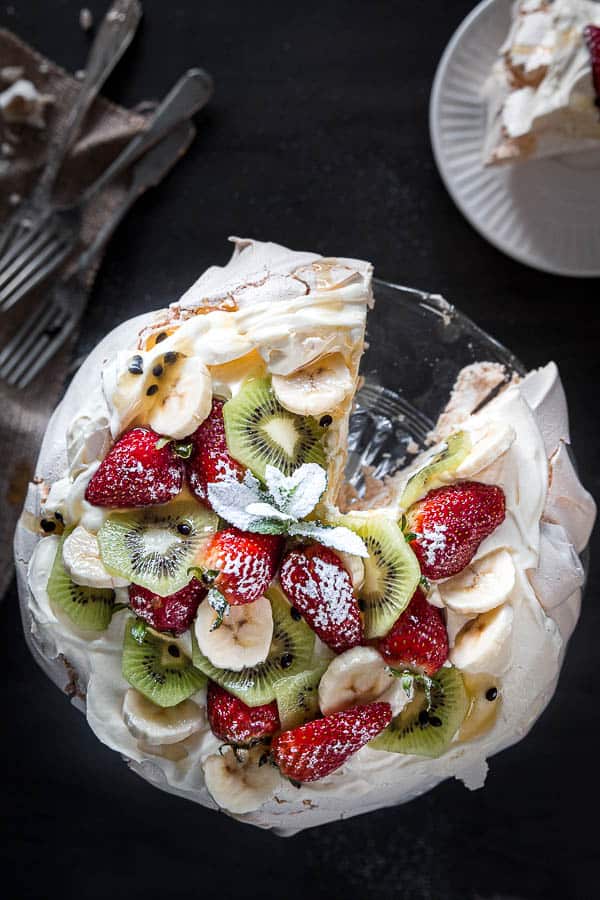
Wandercook’s Tips
- Always use room-temperature eggs – cold eggs can cause your meringue mixture to be too runny.
- Don’t be tempted to add the sugar into the egg whites too quickly. If added too soon, this can make the meringue runny.
- Give the egg whites and sugar plenty of time to combine fully. If you don’t, it can lead to a gritty texture and may cause the pavlova to crack or collapse.
- Cooking the pavlova on the lowest rack in the oven can help to stop it cracking.
- One of our readers suggested humidity can have an effect when cooking meringues! For best results, try avoiding super humid days/environments if possible.
- Leftover egg yolks? Use them to make Italian almond crescent cookies.
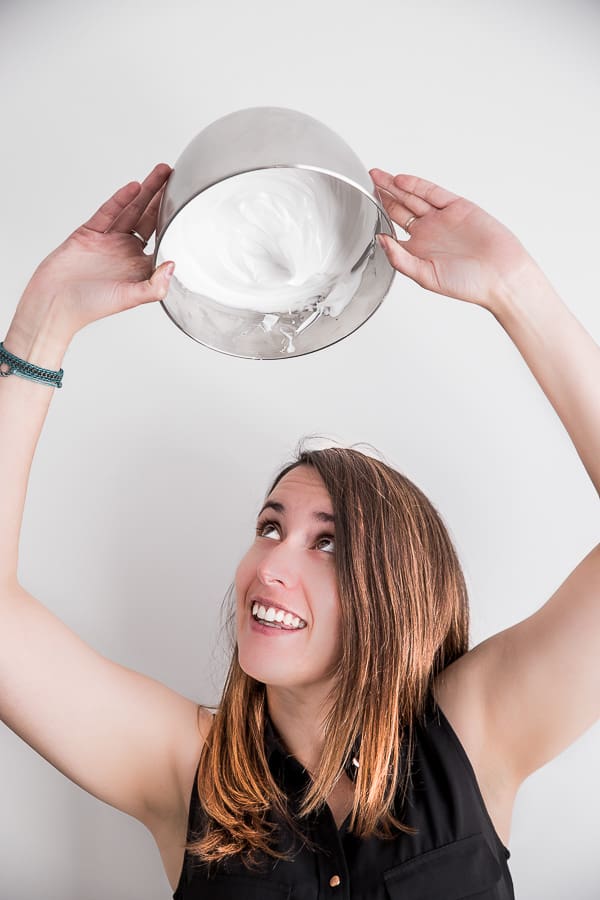
FAQs
You’ll know when it’s ready, because your meringue mixture should stay firmly stuck in the bowl, even if you tip it upside down. Testing this theory over your head is, of course, completely optional!
Our general rule is at least an hour or two, or even overnight if you want to play it safe. Once the oven is cool, the pavlova should be too, so it’s all good to take it out.
If you take the Pavlova out the oven too soon while it’s still warm this will cause it to sink, collapse and shrink from the cold air.
To help the oven cool down quicker, we open it just a crack so the hot air can escape faster without allowing the cold air to come in too quickly.
If you’re worried, leave the pavlova in the oven overnight with the door shut then top it first thing in the morning.
Don’t worry though, pav is such a forgiving recipe – even if the meringue cracks or sinks in the middle, once it’s covered in whipped cream and toppings no one will ever know. And no matter what it ends up looking like, it always tastes amazing!
Yes! You can make pavlova in advance, even up to a few days. Just store in an airtight container or wrapped in a clean tea towel. Keep the meringue base separate from toppings to keep it crisp, crunchy and fresh for when you serve it up.
It’s always best to store leftovers in the fridge, especially due to the whipped cream topping. While the shell will be softer and won’t stay as crispy, it’ll still be delicious the next day!
Variations & Substitutes
- Make Mini Pavlovas (aka Eton Mess) – Portion out the mixture into separate circles as big or as small as you like. Once cooked, top with a simple topping of whipped cream, strawberries and a sprig or two of mint leaves.
- Crush it! – Deliberately crack the pavlova into pieces, then add to a bowl and top with whipped cream and fruit. For bonus points, serve in glass for a stunning visual effect.
- Play with Shapes – Make it as a square, a wreath (perfect for Christmas!), or a love heart. Make thinner layers of pavlova, then once cooked, layer them up into stacks with the toppings as ‘fillings’ in the middle.
Want more delicious desserts? Try these:
★ Did you make this recipe? Please leave a comment and a star rating below!
Equipment
Ingredients
For the Pavlova Meringue
- 6 egg whites
- 390 g caster sugar / superfine sugar
- 1 tsp cornstarch / cornflour heaped
- 1 tsp vinegar
- 1 tsp vanilla essence
For the Whipped Cream
Optional Toppings
- 1 punnet strawberries sliced
- 1 kiwi fruit sliced
- 1 banana sliced
- 1 passionfruit pulp extracted
- 1 tbsp icing sugar / powdered sugar to sprinkle
Instructions
For the pavlova meringue:
- First up, preheat your oven to 150˚ Celsius and line your tray with baking paper.
- Pop your egg whites into the mixing bowl and attach the whisk to the stand mixer (or use a hand mixer). Start by whipping them on Speed 2 then move through to Speed 4 after a couple of minutes.6 egg whites
- When the egg whites turn into bubbly soft peaks, up the speed to 6 and add the caster sugar and cornstarch, then increase to Speed 8 for 10 – 12 minutes until you’ve got yourself a luxuriously smooth, glossy meringue mixture.390 g caster sugar / superfine sugar, 1 tsp cornstarch / cornflour
- Now bring the speed down to 4 and pour in the vinegar and vanilla essence. You might need to scrape down the meringue from the sides of the bowl every now and again with a spatula to make sure it mixes through. Let it mix for 1 minute then switch off your mixer.1 tsp vinegar, 1 tsp vanilla essence
- Scoop out the glossy meringue mixture onto a lined baking tray and form a flat circle shape. Smooth it out or get creative with decorative patterns, twists or twirls. Pop in the oven and bake for an hour to an hour and a half until the meringue sets into a crunchy, crispy outside with a soft golden glow. When the outside is firm and dry, and cracks start to appear on the top, you’re ready to go. Switch off the oven and allow the pavlova to cool in the oven with the door slightly open.
For the whipped cream:
- While the pavlova is cooling, pour your cream into your cleaned mixing bowl and pop in the freezer for 10-15 minutes. When your pavlova is cool, place the bowl back on the stand mixer (or grab your hand mixer) and whip the cream on Speed 6 – 8. Add in the caster sugar and vanilla essence and continue to whip until the cream thickens and holds a nice shape.400 g thickened cream / heavy cream, 75 g caster sugar / superfine sugar, 1 tsp vanilla essence
To assemble:
- Top your cooled pavlova with whipped cream and sliced fruit such as strawberries, kiwi fruit, banana and passionfruit, and sprinkle with icing sugar.1 punnet strawberries, 1 kiwi fruit, 1 banana, 1 passionfruit, 1 tbsp icing sugar / powdered sugar
Video
Recipe Notes
- Eggs – For best results, make sure to use room-temperature eggs – cold eggs can cause your meringue mixture to be too runny. We use chicken eggs for this recipe, but duck eggs are absolutely fabulous if you can get your hands on them!
- Sugar – We recommend caster sugar, aka superfine sugar. It dissolves into the egg whites more quickly and will give you that smooth texture you’re looking for. Don’t be tempted to add the sugar into the egg whites too quickly. If added too soon, this can make the meringue runny.
- Vinegar – The acid in vinegar helps the egg whites become fluffy and hold onto all that air that’s beaten in. Regular white vinegar (or white wine vinegar) is the best choice, but you can substitute with apple cider vinegar, cream of tartar, or even lemon juice in a pinch. We don’t recommend strong dark vinegars like balsamic or malt as they’re more likely to add a strong flavour to the meringue.
- Give it Time – Give the egg whites and sugar plenty of time to combine fully. If you don’t, it can lead to a gritty texture and may cause the pavlova to crack or collapse.
- Stop it Cracking or Collapsing – Cooking the pavlova on the lowest rack in the oven can help to stop it cracking. Humidity can have an effect when cooking meringues -for best results, try avoiding super humid days/environments if possible. Both cracking and collapsing could be caused by taking the pavlova out of the oven too soon while it’s still warm. To help the oven cool down quicker, open it just slightly so the hot air can escape faster without allowing the cold air to come in too quickly. If you’re worried, leave the pavlova in the oven overnight with the door shut then top it first thing in the morning.
- Make Mini Pavlovas (aka Eton Mess) – Portion out the mixture into separate circles as big or as small as you like. Once cooked, top with a simple topping of whipped cream, strawberries and a sprig or two of mint leaves.
- Crush it! – Deliberately crack the pavlova into pieces, then add to a bowl and top with whipped cream and fruit. For bonus points, serve in glass for a stunning visual effect.
- Play with Shapes – Make it as a square, a wreath (perfect for Christmas!), or a love heart. Make thinner layers of pavlova, then once cooked, layer them up into stacks with the toppings as ‘fillings’ in the middle.
Nutrition
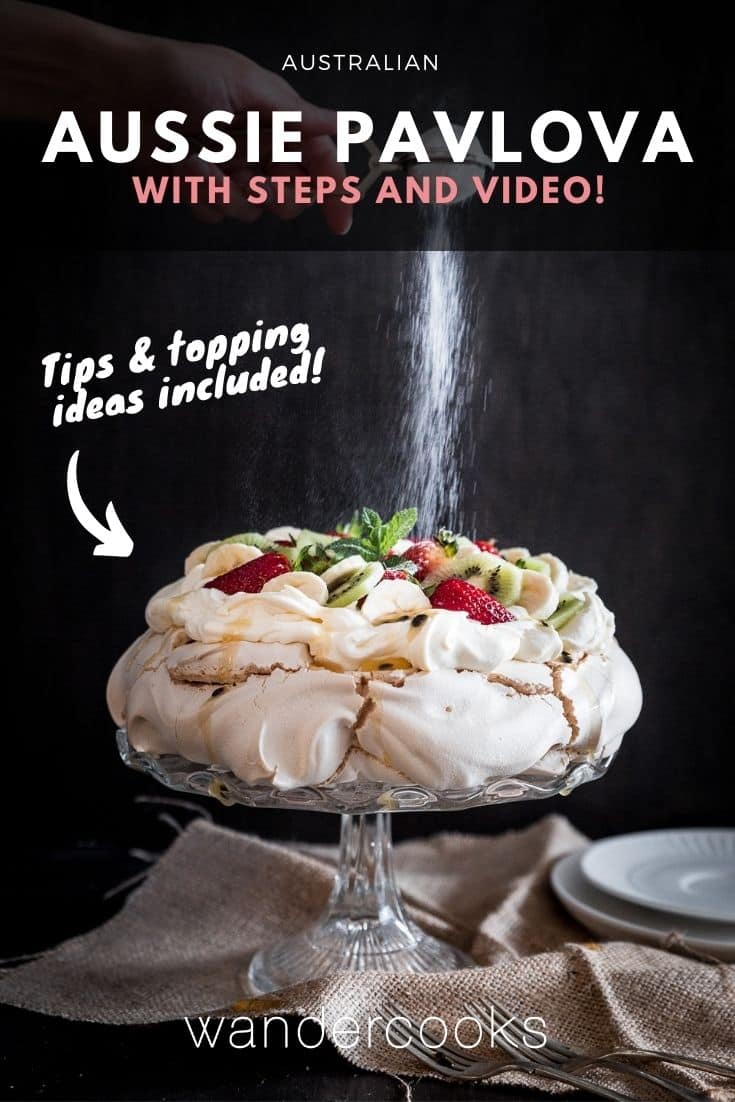

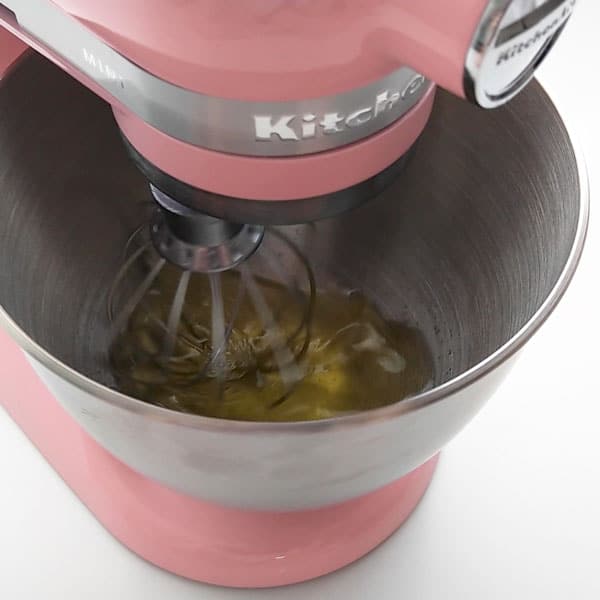
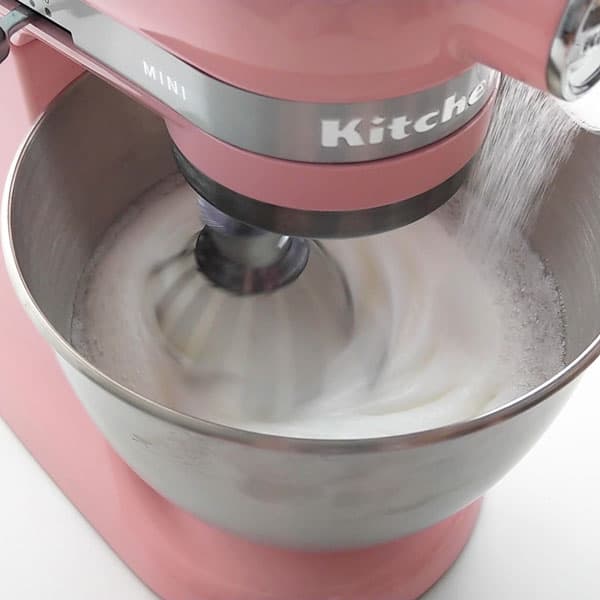
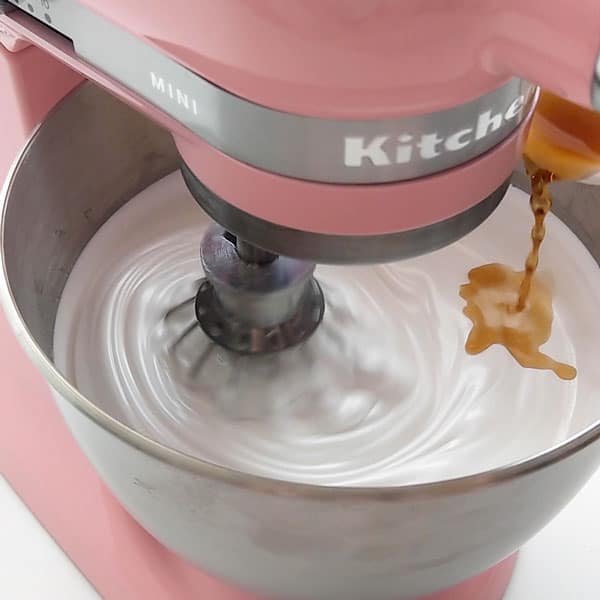
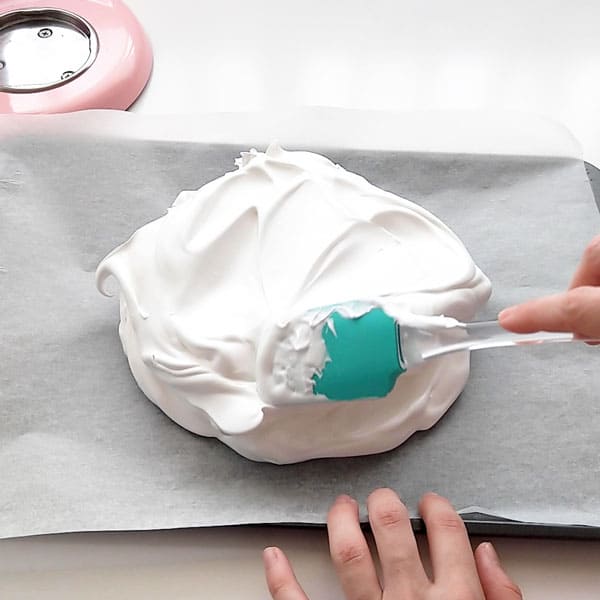
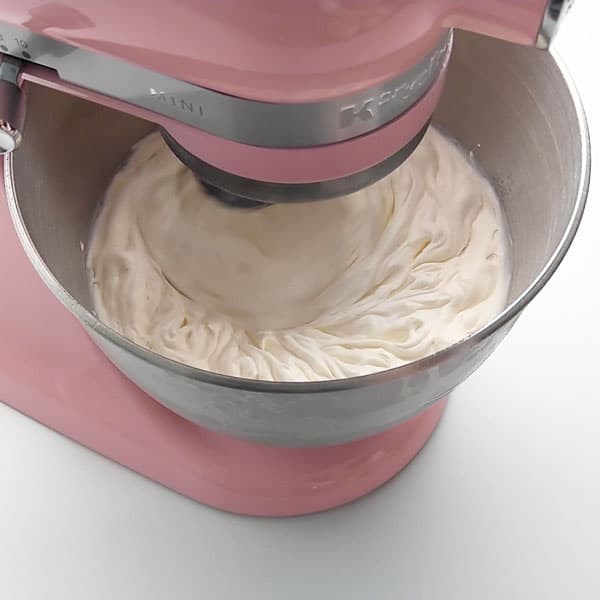
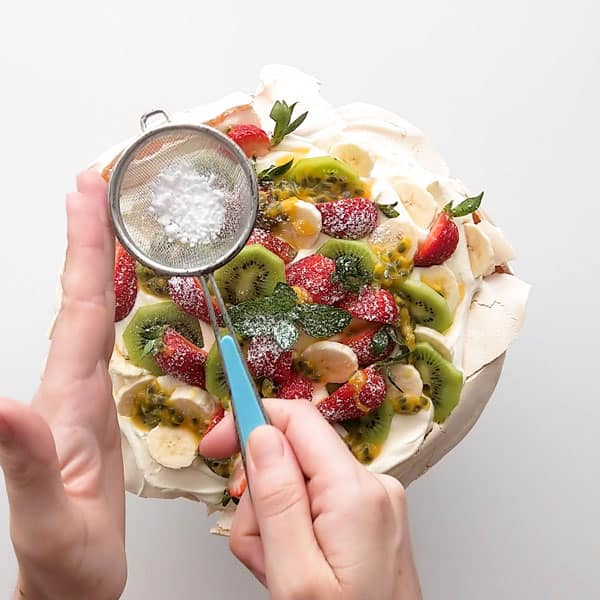
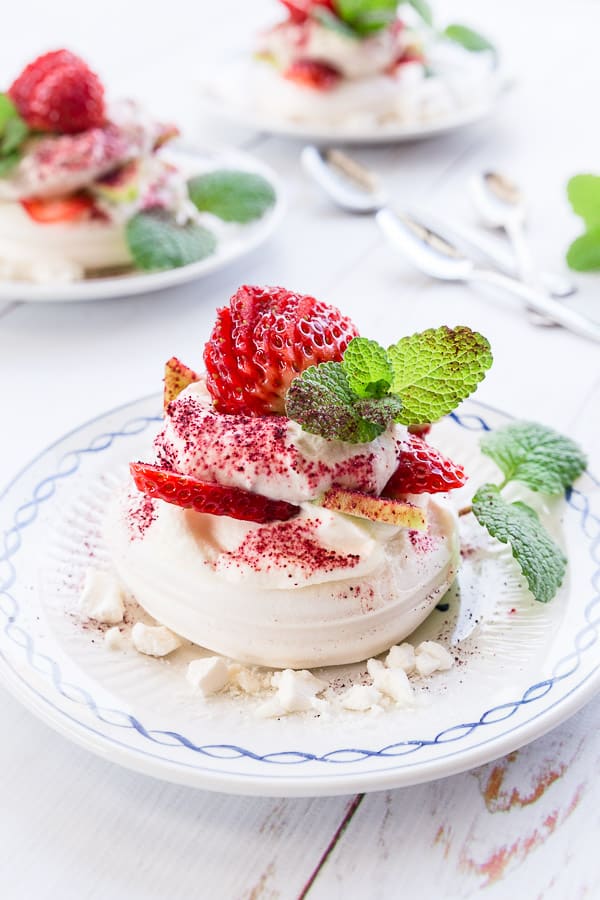
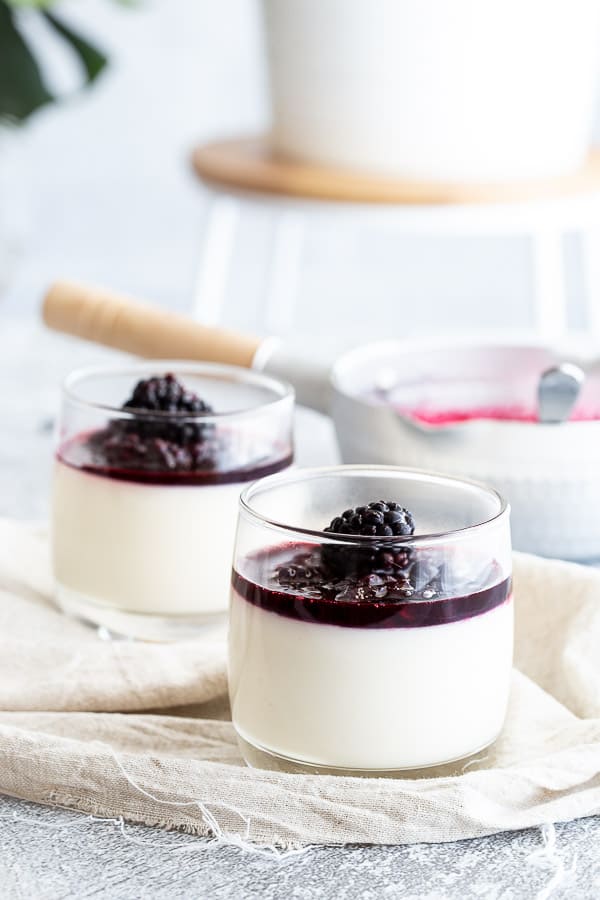
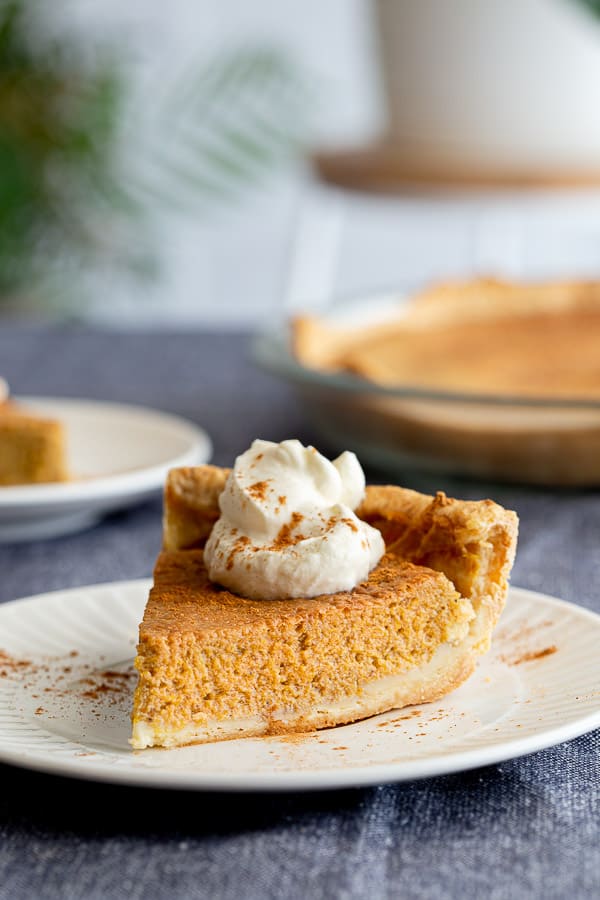
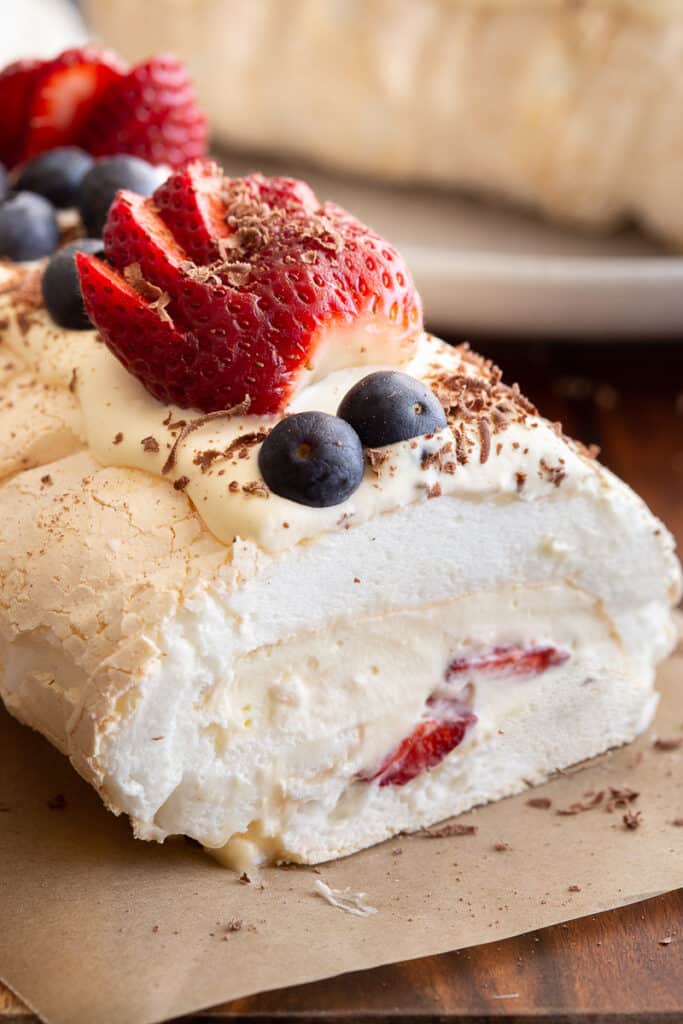
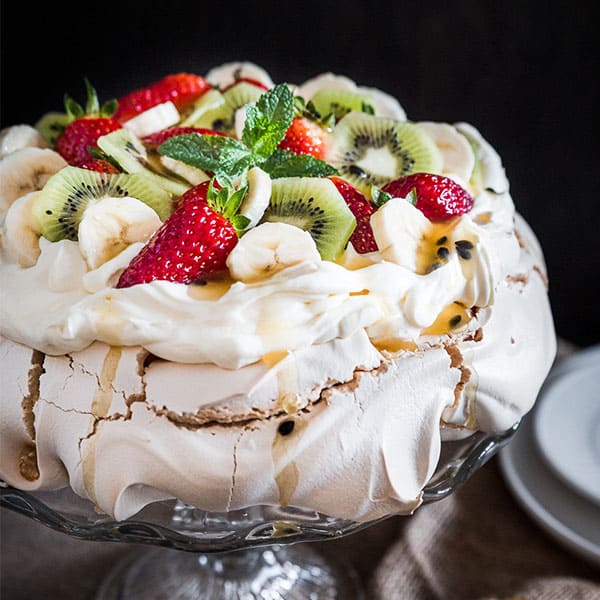



110 Comments
Megs
26/02/2023 at 4:36 pmHi guys!
Any advice on how to convert this to a brown sugar pav?
Is it just as simple as swapping the white caster sugar for brown?
This recipe of yours looks so divine I think it would make a delicious brown sugar version.
Love your website… have made heaps of your recipes – especially the old Aussie faves that bring back so many childhood memories (and have me reaching for my copies of Green & Gold!)
Keep up the good work!
(And enjoy this cool break we’re finally having!)
Cheers,
Megs
(from Aldinga Beach)
Wandercooks
26/02/2023 at 10:05 pmHey Megs! Sooo happy it’s cooler!
While we haven’t tested it, you should be able to sub in brown sugar instead of white. The main thing you want to make sure is that it’s dissolved well with the egg. So when you rub a little bit between your fingers, there’s no grittiness.
I’d say the brown sugar will lower the “sweetness” flavour and add a wonderful caramel tone to the base.
Let us know how it turns out! 😁
Mary K.
16/01/2023 at 12:58 amHello. I would like to try this recipe. It looks amazing. I want to know how long can the Pavlova keep once assembled and ready ?
Wandercooks
17/01/2023 at 9:34 amHi Mary, it’s best assembled on the day, up to a couple of hours before you plan to serve it. You can make the base ahead of time, just keep it separate from the toppings.
Lucretia Borgia
05/07/2022 at 9:05 pmI’m an Australian but happy to concede that Pavs are historically Kiwi born!
Number one tip is to test the beaten egg whites between your finger tips: keep beating till you can’t feel any grittiness from the caster sugar.
Number two tip is to spread the mixture on a sheet of edible rice paper (available online) to save assembly and serving trauma. Very professional!
Number three is to turn off the oven and let the pav cool slowly, if you have the time: much less damage to the case.
Wandercooks
18/07/2022 at 9:58 amGreat tips Lucretia, we always recommend leaving the pav to cool in the oven overnight if you have the time. 🙂 Hadn’t heard of the rice paper base before though, what a great idea.
Vish
05/11/2021 at 5:50 pmI just made the most AMAZING pav following your recipe. I’ve made pavs before, but this was next level, crunchy on top, soft in the middle and crunchy on the base. Feeling very proud of myself right now!! 😊
Wandercooks
08/11/2021 at 4:30 pmAmazing Vish! Thanks for the awesome feedback, we’re so glad to hear!
Dee
30/12/2020 at 10:01 amHi! Happy New Year!
I am in the USA and have been dying to try to make a pavlova. I have a couple of questions. Is superfine sugar the same as powdered sugar? Also, when I turn my oven off, a fan comes on to cool it down, will this affect the pavlova? I was going to leave in the oven overnight but worried about the fan. Is the oven temperature to cook it 300 F ?
I would have loved to make this for Christmas but needed a practice run with no pressure, lol!
Also, I only have a hand mixer not a stand mixer.
Thanks for your help! It looks and sounds delicious!!
Wandercooks
30/12/2020 at 3:39 pmHey Dee! Thanks for reaching out and Happy New Year to you too! Here’s some answers to your questions.
Sugar: Okay, for the sugar you want either caster sugar or bakers sugar and not powdered sugar in this instance.
Oven Fan: When you turn your oven off, that should be fine with the fan. The main culprit of a bad pavlova is humidity, so keeping the door completely shut even with the cooling fan on should be the way to go.
Oven Temp: Yep, correct it’s 300F or 150C. 🙂
Hand Mixer: Should work a treat – my Nan always used a hand mixer anyway. Main thing you want is the bubbly whites before adding the sugar and then those really glossy white stiff peaks for your pavlova mixture. Watch the video a couple of times, and you’ll see how the texture changes and how stiff it is when it’s ready.
Most importantly, have fun! I like your thinking with practising first, then you get to treat yourself and eat it twice!
Happpy Cooking, S&L 🙂
Leslie
29/12/2020 at 2:50 amHello from Mississippi! The picture made this desert look so elegant I just had to try! And I’m so glad I did; it was a big hit and came out beautiful! Ensuring low humidity and leaving the Pavlova in the oven overnight was the key for me! Thank you!
Wandercooks
29/12/2020 at 2:54 pmAmazing Leslie! Thanks for your feedback and so glad to hear it turned out well – what a treat!